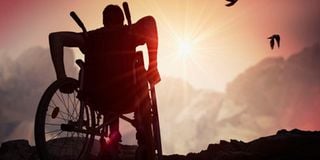Killing children with disabilities a collective stain

Murder of children with disabilities is a sensitive topic that should be spotlighted.
Local media recently reported how a 34-year-old woman was at risk of facing attempted murder charges in Nyeri County for allegedly abandoning her sister’s teenage son, who has cerebral palsy, in a forest to die. She allegedly plotted the heinous act with the 13-year-old boy’s mother.
Murder of children with disabilities is a sensitive topic that should be spotlighted. It has been documented in neighbouring Uganda as ‘mercy killing’. A 2018 investigation report by Disability Rights International (DRI) and the Kenya Association for the Intellectually Handicapped (KAIH), “Infanticide and abuse: Killing and confinement of children with disabilities in Kenya”, said that, of the 61 mothers of children with disabilities surveyed, 45 per cent said they were pressured—even by their husband or other relative—to give up or kill their child.
Many reasons for that have been documented, including that the child is “cursed” or by having a child with disability they had “brought shame to their family and community”. The report says 15 per cent of the women were told they would be unable to work and take care of their child and 11 per cent that their child “would not live a full life” and so there was “no point in keeping the child alive”.
Stigma and abuse
In 2020 story, “It takes a village to kill a child—Uganda’s hidden children”, Al Jazeera documented that, for lack of government and community support, and faced with stigma and abuse, many children with disabilities in Uganda are hidden indoors. It said in Kenya, many are left in institutions, where they are at risk of inhumane and degrading treatment and torture life-threatening conditions.
With a progressive Constitution that offers every Kenyan a life of dignity, the state must support families of children with disabilities. Rightfully so, Kenya has an obligation to guarantee the right of every child to a family, free from torture and inhuman and degrading treatment. The government has a responsibility to fight discrimination and stigma against persons with disabilities.
Social protection programmes like the cash transfers to families in need, including families of children with disabilities, play a positive role in supporting inclusion of children with disabilities.
But organisations of persons with disabilities have often pointed out the programme’s challenges—such as delayed payments and a long registration waiting list. Others, as documented by the DRI/KAIH report, include lack of training and guidance to parents, essential for ensuring adequate care for their children, and insufficient stipends.
But the programmes are only one avenue that can catalyse inclusion of children with disabilities in communities and families. Others include raising awareness of their plight and fostering respect for their rights and dignity, as well as combating stereotypes, prejudices and harmful practices.
Society should remember that it may take a village to raise a child but, certainly, not to kill them.
Ms Ombati is a disability rights advocate. [email protected].





